THE REDBIRD REVIEW
Well, it’s looking more and more like Boston or bust for Nolan Arenado and the Cardinals. A robust trade market never really developed for the St. Louis third baseman, and the publicly known list of interested trade partners has dwindled.
– Arenado used his social media platform to convey his interest in becoming a Los Angeles Dodger. The Dodgers are not interested.
– When fans of the New York Yankees went on social media to express enthusiasm for Arenado reuniting in the Bronx with new Yanks first baseman Paul Goldschmidt, Arenado hit the “like” button on social media in approval of the sentiment. But the talks between the teams failed to gain traction.
– That said, are the Yankees really serious about going with a third-base combination of players that include DJ LeMaieu, Oswaldo Cabrera and Oswald Peraza? LeMaieu, who turns 37 next season, has slugged only .362 and dealt with injuries over his last four seasons. Perhaps Yankees GM Brian Cashman is playing hardball with the Cards president of baseball ops John Mozeliak and will soften his stance getting closer to spring training.
— As retired MLB first baseman and former Yankees coach Sean Casey said on a recent podcast: “The Yankees just got (starting pitcher) Max Fried for eight years at $218 million. Max Fried is the No. 1 ground-ball pitcher in the game. Where are those ground balls going? Third base, you know what I mean? And then you’ve got Arenado, a Gold Glove winner, over there. Him and (shortstop) Anthony Volpe on the left side—oh, forget about it, dude. That shores it up big time.
“They need a third baseman,” Casey continued. “You put Jazz Chisholm back at second, and you’ve got Volpe and Arenado on the left side of the infield. Then, you could bring Bellinger into first. You know they’re going to do something there.”
— St. Louis and Houston were nearing the completion of a trade to send Arenado to the Astros – but Arenado used his contractual right to veto the deal. Arenado seemingly left the door open to reconsidering Houston later in the offseason, but that particular door was slammed shut and sealed off, when the Astros signed first baseman Christian Walker to a three-year, $60 million free-agent pact. The Astros planned to move newly acquired third baseman Isaac Paredes to first base to make room for Arenado, but that wasn’t necessary.
— Baseball media speculated on Philadelphia as a possible destination for Arenado. But as of now Alec Bohm is still the Phillies’ third baseman and the Philly front office has huffily dismissed rumors of the team’s interest to move on from Bohm and obtain Arenado.
— That leaves Boston. And the Arenado camp apparently sent signals to the Red Sox. This, on Sunday, from MassLive.com baseball writer Chris Cotillo: “If the Red Sox go hard after him, they won’t have trouble getting an approval. Sources tell me and (baseball writer) Sean McAdam that the Red Sox are a preferred destination — if not the preferred destination — for Arenado.” That sure sounds like another lobbying effort by Arenado and his agent.
— The Red Sox, along with the Tigers and Blue Jays, are reportedly in on the negotiations for free-agent third baseman Alex Bregman. If Boston lands Bregman, there is no need for Arenado … although Red Sox manager Alex Cora has said Bregman is capable of playing second base. But if Bregman signs elsewhere, the Red Sox could pivot to Arenado. But it’s complicated. To install Arenado at third base, the Red Sox would have to move Rafael Devers to first base – and then trade first baseman Triston Casas. Craig Breslow, Boston’s chief baseball officer, has tried to scuttle such speculation.
— There’s another problem – as described by the superb Katie Woo in her Tuesday report on Arenado/Cardinals for The Athletic: “The financial stipulations have complicated the team’s trade attempts,” she wrote. “The Cardinals will not take on a large sum of Arenado’s contract just for the sake of moving him. They are looking for a team to take on the majority of his remaining $74 million over three seasons. The situation becomes more complex when factoring in Arenado’s full no-trade clause.”
I find it difficult to understand the Cardinals’ position on Arenado’s contract. First of all, Arenado’s former team, Colorado, is responsible for paying $10 million of his $74 million. That leaves $64 million for the Cardinals (or a new team) to cover. If the Cardinals absorbed 25 percent of the salary owed to Arenado through 2027, that would reduce his guaranteed money to $42.667 million over three years.
That would reduce his annual average salary to $14.423 million. At that pay grade, interested teams would probably feel more comfortable about pursuing Arenado for his defensive value. And by being agreeing to handle the 25 percent of Arenado’s remaining salary obligation, the Cardinals would likely receive more of a return in the trade exchange. Probably nothing dramatic – but they’d presumably get a more appealing prospect or two.
By picking up 25 percent of the tab in a trade, the Redbirds would get Arenado out of here, save nearly $43 million, create an opening for Nolan Gorman to play third base. And with Arenado gone, it probably leads to a more prominent role with the big club for rookie infielder Thomas Saggese in 2025.
Why would chairman Bill DeWitt Jr. and John Mozeliak balk at that. If I am missing something here, feel free to text me Mr. DeWitt.
PART ONE: WHAT IF ARENADO STAYS IN ST. LOUIS?
I’ve written about the potential consequences, but let’s review:
1. The team is fired up by the plan to move Gorman to third base, his natural position. But that’s blocked if Arenado remains with the Cardinals. Gorman would set up at second base for the fourth consecutive season and would likely become a bigger part of the DH cast in order to give Brendan Donovan a good number of starts at second base.
2. If Arenado is still a Cardinal, Donovan could log more games in left field. But if Donovan is in left, would manager Oli Marmol shift Lars Nootbaar to center field? I ask because Marmol seems fixated on giving the starting CF job to Michael Siani, an excellent defender who is 43 percent below average offensively (per wRC+) in his big-league career. And Siani was 36 percent below league average offensively for the Cardinals in 2024. And how many games would Alec Burleson get at DH or in left field?
3. With Arenado back, creating a surplus of infielders, Saggese could open the 2025 season at Triple A Memphis … and this, after the MLB Network recently touted Saggese as a strong National League Rookie of the Year candidate for ‘25.
4. I’ve mentioned this before, but the Cardinals have no obligation to start Arenado at third base for the usual number of games. In his four seasons in St. Louis Arenado has averaged 140 starts per year. If Arenado’s offensive performance continues to decline, the Cardinals could start him 100 times, or even 90 times, and still give Gorman a good run of games at third base. Arenado’s defense would be valuable in trying to protect late leads. And starting fewer games would likely help Arenado with his creaky back and save wear and tear on his aging frame. But I imagine Arenado would be displeased by sitting on the bench a lot more than he’s used to. And an unhappy Arenado would not be a pleasant presence in the dugout and clubhouse as the Cardinals get younger as a team.
5. To shrink the payroll, the Cardinals will likely trade a pitcher or two to compensate for Arenado sticking around. Could be Erick Fedde, Ruan Helsley, Steven Matz, Sonny Gray, Miles Mikolas … but Gray and Mikolas have no-trade clauses — as does first baseman Willson Contreras. Gray and Contreras want to stay here. Mikolas has a 5.04 ERA over the last two seasons. Good luck trying to talk a team into taking him, and he can veto a trade anyway.
Matz is set to receive $12.5 million in 2025. A couple of teams are said to be interested in him but probably would ask the Cardinals to defray the injury risk by consuming some of that $12.5 million. Three seasons into a four-year deal worth $44 million, Matz has averaged only 11.3 starts per season for the Cards. (He’s also worked out of the bullpen and done fine in the role — but that’s not why St. Louis signed him.
PART TWO: WHY IS THE ARENADO TRADE MARKET SO COLD?
First, I’ll be using wRC+ as a reference for offensive performance. The great Dayn Perry of CBS Sports and his “Birdy Work” blog offered a definition of what wRC+ is and why it’s a good way to evaluate a hitter’s work.
This one measures all phases of production at the plate and adjusts them for ballpark and league environments. The higher the wRC+, the better the hitter is. wRC+ is scaled so that a mark of 100 reflects a league-average hitter. wRC+ is like OPS+ in that regard, but it’s an improvement over OPS+ because it takes into account baserunning, double plays, and so forth.
OK, back to the cold trade market for ‘Nado.
There are three obvious reasons:
A) He’s already experienced an alarming decline offensively and will be 34 years old next season. His power numbers are likely to be down again in 2025 … not to mention 2026 and 2027.
B) Even with salary relief provided by the Cardinals, Arenado’s contract is problematic for some teams who may covet him for his stellar defense. But his offensive value continues to drop.
C) Arenado’s no-trade clause looms as an obstacle. Teams that might have legitimate interest in him – let’s cite the Mariners, Blue Jays, Royals and Nationals as examples – would likely get the thumbs-down veto by Arenado.
But to truly comprehend why teams are reluctant to trade for Arenado, you must try to see him as they see him. And what they’re seeing are a lot of red flags.
Slugging percentage: Arenado slugged .513 in his first two seasons as a Cardinal. That dropped to .426 in his last two seasons – including a career-worst .394 slug in 2024.
Overall value: Arenado averaged 5.95 Wins Above Replacement (WAR) in his final four (full) seasons with Colorado. Arenado was very close to that in average WAR (5.75) in his first two seasons as a Cardinal. But over the past two seasons, Arenado’s average WAR subsided to 2.9. Much of that downturn is attributable to his fading offensive profile.
Arenado’s pull-side power: It’s waning. And this is crucial because he must pull fly balls in the air to left to drive home runs. As a Cardinal, about 88 percent of Arenado’s home runs have been pull shots (home and away.) If he can’t turn on a pitch and launch airborne shots to left field, his power is limited.
Here’s something I put together last month. I took a look at Arenado’s four seasons in St. Louis. I examined his annual percentage of pulled fly balls, his number of pulled home runs, and the percentage of his pull-side fly balls that landed as homers. The trend is revealing:
2021: 41.4 percent pulled, 32 home runs, and 30.7% of his pulled fly balls were homers.
2022: 37.2% pulled, 28 home runs, and 30.7% of his pulled fly balls were homers.
2023: 34.3% pulled, 20 home runs, and 29.4% of his pulled flies were homers.
2024: 32.6% pulled, 13 home runs, and only 20.6% of his pulled flies were homers.
Just note the difference between 2021 and 2024. It’s glaring. And Arenado’s ground-ball rate continues to swell: 45 percent in 2023, up to 49.3 percent in 2024. He doesn’t put enough fly balls into flight. Over the last two seasons Arenado has hit .253 on ground balls, but 89 of his 95 hits were singles. (Six were doubles.)
Over the last two seasons Arenado has 21 total RBIs on grounders … and his increased ground-ball rate has led him to hitting into 36 total GB double plays. As the hockey people would say, that’s a minus 15 for Arenado. Yikes.
Arenado’s power against Fastballs: And that’s all varieties of fastballs.
– He had a .459 slugging percentage on fastballs in 2021
– A .606 slug on fastballs in 2022
– A .500 slug on fastballs in 2023
– A .416 slugging percentage on heaters in ’24
Arenado doesn’t hit the ball hard. Not enough times, anyway: Last season his hard-hit ranked in the bottom 12 percent of all big-league hitters. A factor in that was an average exit velocity that put him among the bottom 9 percent. And his barrel rate dropped to the bottom 6 percent of all hitters. These ailments (obviously) have had a negative impact on his raw power.
Arenado’s bat speed is a dragging: Arenado was in the bottom 28 percent of all big-league hitters in bat speed last season. Major-league hitters had an average fast-swing percentage of 23 percent, which was well above Arenado’s fast-swing rate of 13 percent. He has a long swing. He has a slow swing. That tells us a lot about why he hasn’t pulled the ball with more authority.
Arenado no longer hits as many “no-doubt” home runs: This is from Statcast, and I’m referring to the number of Arenado’s home runs as a Cardinal that were “no-doubt” launches:
* 62 percent no-doubt home runs in 2021
* 43 percent no-doubter HRs in 2022
* 38.5 percent no-doubt HRs in 2023 …
* Only 12.5% of his homers were no-doubters in ‘24.
That means Arenado’s percentage of no-doubt home runs has dropped by a disturbing 49 and ½ percent since 2021. Whoa.
Arenado has collapsed against left-handed pitching: Though his slugging percentage vs. right-handed pitchers went down last season, Arenado stayed above the league-average level overall against righties in 2024 – coming in at 10 percent above the league rate for wRC+
Despite having the platoon-split advantage as a RH batter, Arenado has been horrendous vs. lefties over the last two seasons, hitting .227 with a .271 onbase percentage and .383 slug for a .654 OPS.
Over the two-year period his wRC+ against lefties was 23 percent below league average offensively. In his first two seasons as a Cardinal, Arenado was 51 percent ABOVE the league average vs. lefties.
The lefthanders have been owning Arenado with breaking pitches and offspeed stuff since the start of 2023. He has a .221 average and .286 slug on breaking balls, and a .234 average and .325 slug against offspeed offerings. Those stats are far worse when Arenado has a two-strike count.
The false Fenway Park narrative: This one never ends, and it makes me laugh. The theory: hey, give Nolan Arenado 81 home games at Fenway Park, and the change in location will cure his diminishing power.
Short porch! Green Monster!
Lots of homers and doubles!
Arenado reborn!
Gee, I don’t know about that. I went to FanGraphs and had a ride on the search engine to study some evidence. But my first stop was Statcast. As we know, Arenado hit a career-low 16 home runs last season. But according to Statcasy, only 12 of the 16 homers would have gone out at Fenway Park.
Surely, Boston’s right-handed hitters fared a lot better last season when batting in their home yard …. right?
No. Sorry, sparky. That simply isn’t true.
In 2024, Boston’s right-handed batters hit for a higher batting average on the road. Their slugging percentage was .392 at Fenway Park and .407 on the road. Their Isolated Power number was 12 points higher when away from Fenway. They hit 10 more home runs on the road than they did at home. Their doubles count was slightly higher in away games.
As for overall offensive performance, and using wRC+ as our standard, right-handed Boston hitters were eight percent below the league average at home, and two percent above league average when hitting on the road … meaning that Boston’s right-side batsmen were 10 percent better as a group when swinging away lumber away from the home base at Fenway.
The Arenado saga continues. if there are any newsworthy developments I’ll write about it here in this space.
Thanks for reading …
–Bernie
Bernie was inducted into the Missouri Sports Hall of Fame in 2023. He’s been writing about the sports scene in St. Louis in 1985 and has won multiple awards for his column-writing and as a host in sports-talk radio. You can listen to Bernie in his busy contributor’s role at legendary KMOX radio. Please subscribe to his YouTube channel at @TheBernieShow
For the last 36 years Bernie Miklasz has entertained, enlightened, and connected with generations of St. Louis sports fans.
While best known for his voice as the lead sports columnist at the Post-Dispatch for 26 years, Bernie has also written for The Athletic, Dallas Morning News and Baltimore News American. A 2023 inductee into the Missouri Sports Hall of Fame, Bernie has hosted radio shows in St. Louis, Dallas, Baltimore and Washington D.C.
Bernie, his wife Kirsten and their cats reside in the Skinker-DeBaliviere neighborhood of St. Louis.



